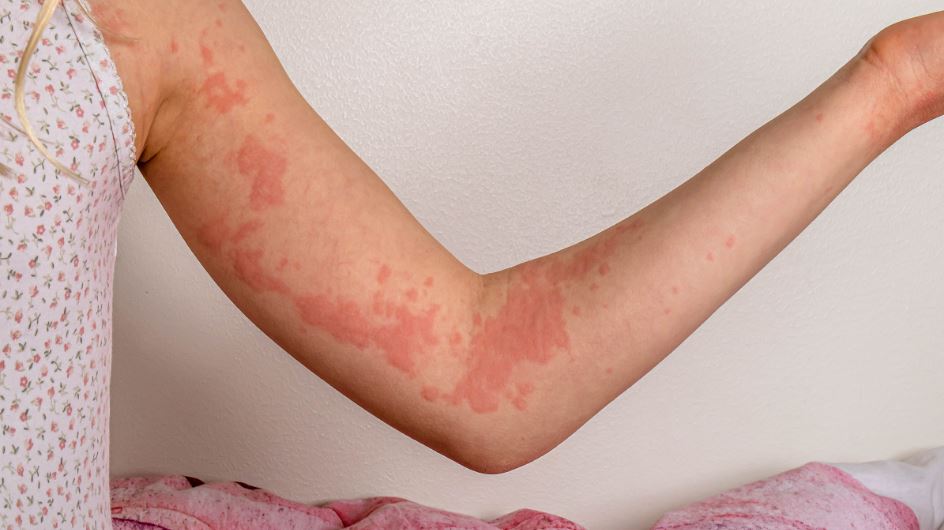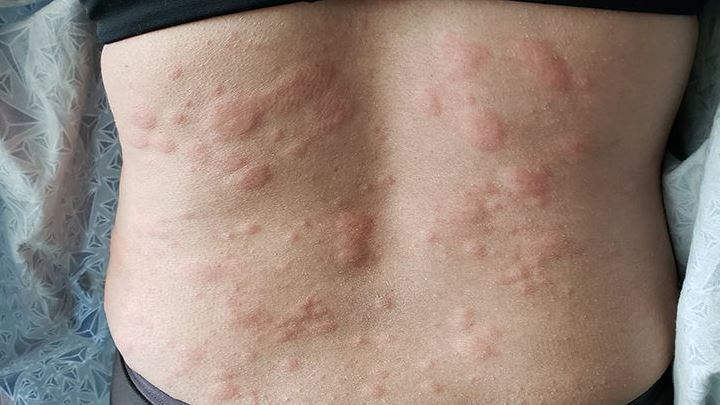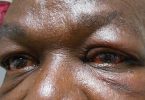What do Hives look like? Symptoms and Treatment
What do Hives look like -Urticaria, more commonly known as hives, is a common skin ailment that manifests itself as raised, red, itchy welts that can show up on any area of the body. Hives can be caused by an allergic reaction. These welts come in a wide variety of sizes and shapes, and they can swiftly arise and fade.
They are typically brought on by an allergic response to a drug or food, but they can also be brought on by other factors like stress or exposure to certain chemicals. The raised bumps may disappear within a few hours or remain for several days.
It is not always possible to determine the precise reason behind hives; nonetheless, researchers believe that it is connected to the release of histamine and other substances from cells in the skin. The distinctive redness and swelling of the welts are both brought on by histamine, which causes the blood vessels to dilate and enlarge. Allergic reactions like hives can be brought on by a wide range of factors, including some drugs, foods, the stings of certain insects, and viral infections. Hives are not the only thing that may be brought on by stress or exposure to specific chemicals.
Hives are characterised by the appearance of welts on the skin that are raised, red, and itchy. The size of these welts can vary anywhere from a few millimetres to several centimetres. It is possible for the welts to emerge in any part of the body, and they could be accompanied by additional symptoms, such as an enlargement of the face, lips, tongue, or neck.

Hives are a common symptom of an allergic response, and in certain instances, they may be accompanied by other signs of an allergic reaction, such as a fever or trouble breathing or a drop in blood pressure.
Antihistamines, which can assist to decrease itching and inflammation, are the common medication prescribed for the treatment of hives. Antihistamines that are available without a prescription, such as diphenhydramine (Benadryl) and loratadine (Claritin), may be helpful in treating mild cases of hives. When symptoms are severe, a corticosteroid medication may be recommended. If you are aware of the trigger that triggered the hives, then avoiding that trigger will also assist to prevent future outbreaks.







